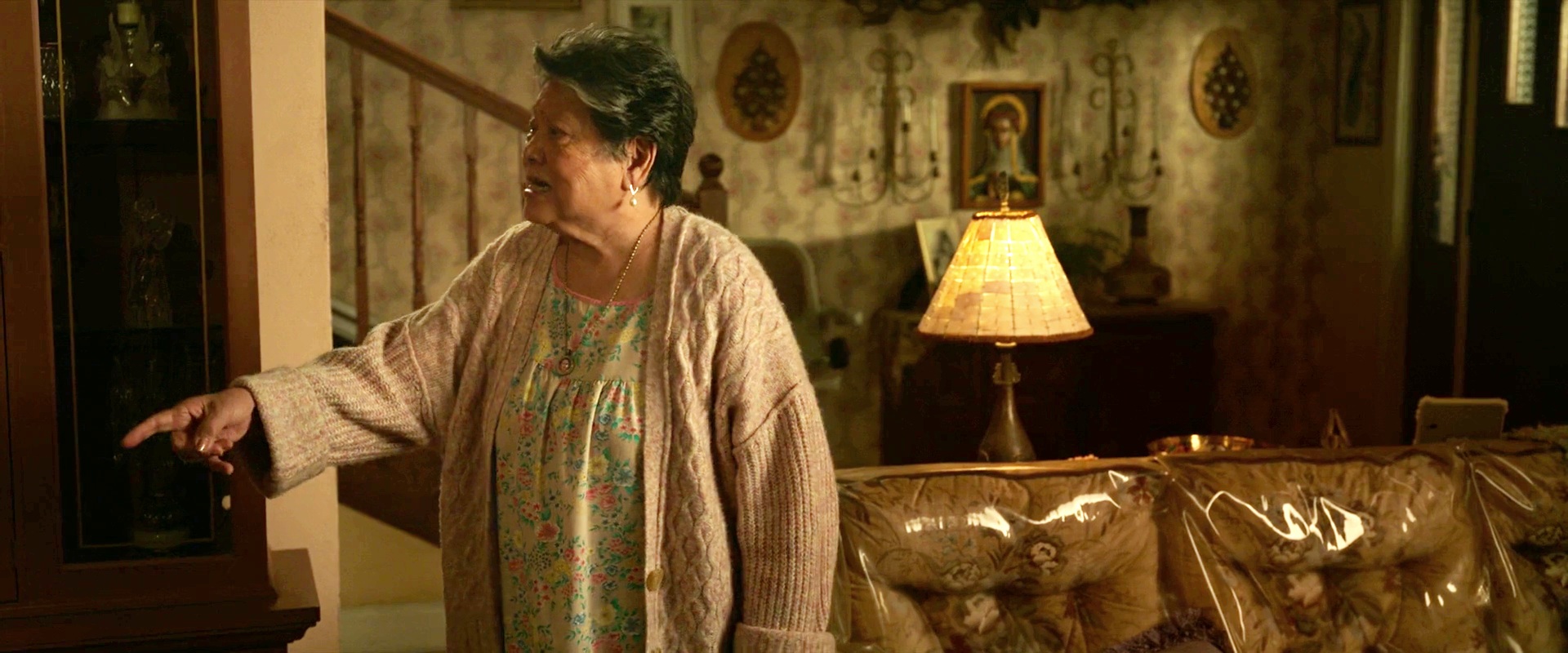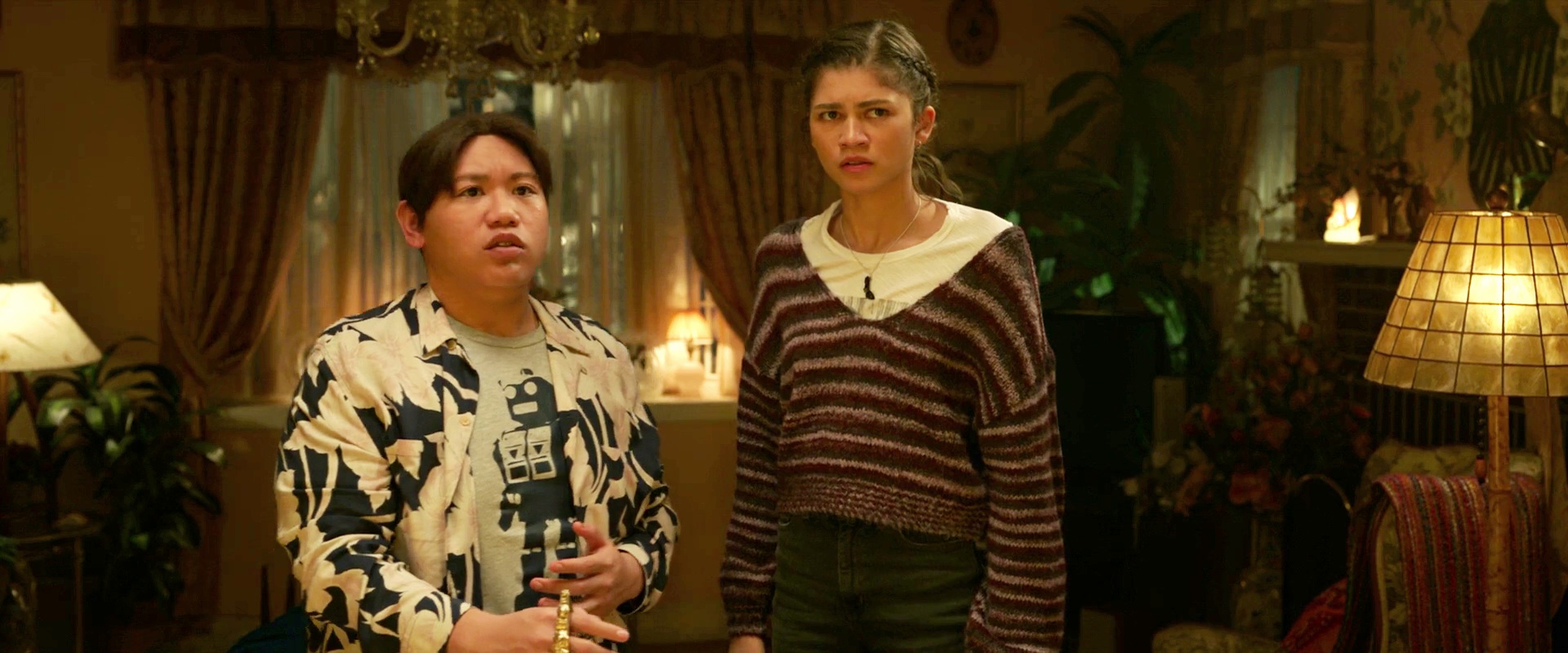The MCU’s Ned, lola, and the Weapons of Moroland in ‘Spider-Man: No Way Home’
It’s been five months since the blockbuster Spider-Man: No Way Home premiered in the United States and four months in the Philippines.
It’s now way past the “no spoilers” threshold which means the whole world now knows that Tobey Maguire and Andrew Garfield reprised their roles as Spider-Man to help Tom Holland defeat multiversal enemies in the latest Spider-Man film.
Tobey and Andrew’s entrance into the Marvel Cinematic Universe (MCU) wouldn’t be possible without Ned Leeds’ (played by Jacob Batalon) newly discovered mystic arts magical abilities.
In No Way Home, Marvel Studios confirmed Ned’s Filipino heritage by having his grandmother’s (played by Mary Rivera) house as the setting for the two older Peters' entrance into the MCU.
Ned’s lola’s house is detailed with uniquely Filipino decorations, furniture and items that definitely remind fellow Filipinos of their own lola’s home.
The plastic-wrapped furniture keeps them clean and brand new. A carabao painting and capiz lamps decorate the living and dining rooms. Religious items adorn the space: the cross, Mama Mary porcelain figurines and a small Sto. Niño statue in the corner of the dining area. A gigantic wooden spoon and fork can be seen displayed in the kitchen. Ned’s lola also has an unfinished project in her sewing corner. MJ even threw pandesal at Andrew’s Spidey.

But one Filipino household decoration caught the attention of MCU fan theorists: the small wooden shield with an array of small swords.
Non-Filipino MCU fans immediately theorized that Ned’s connection to his magical roots lay in the shield.
“What is this in Ned's grandmother's home? What organization is it from? Obviously related to what Ned does in the movie,” one fan asked on Reddit.
And the answers to the question are even more questions: Do the small swords represent an ancient form of weapon that can be traced back to Shang-Chi and The Ten Rings’ interdimensional plane of Ta Lo? Or maybe, it’s part of the mystical relics that sorcerers keep in Kamar-Taj and their sanctums?
It’s a plaque called the Weapons of Moroland. Even though it didn’t come from the comics, it’s a uniquely Filipino cultural artifact that has a history that dates back to more than a hundred years ago. To honor Asian American Heritage month in the United States, let’s explore the history behind the Weapons of Moroland.
Weapons of Moroland
Along with The Last Supper painting, giant wooden utensils and a religious shrine, Weapons of Moroland is part of the long list of items that make it easier for the Filipino diaspora in America to feel at home.
The wooden plaque displays smaller versions of swords and weapons used by warriors from Muslim indigenous groups in the Southern Philippines, which is also known as Moroland. The weapons commonly displayed in the plaque include balasiong, bangkung, panabas and kampilan.
Crafted by Filipino and Moro craftsmakers, the Weapons of Moroland shield is commonly sold at gift shops and Filipino cultural shops.
“The origin of the Weapons of Moroland shield is not clear, although there have been numerous references to it since the end of World War II,” wrote Filipino-American Erwin Tiongson for Positively Filipino. “It is almost certainly a US colonial souvenir and likely from the early 1900s, during the ‘Moro campaigns,’ despite the mid-to-late 20th century references.”
During the Moro rebellion in the Philippine-American War in the early 1900s, the people of Moro resisted American colonization resulting in war and conflict in the southern part of the Philippines.

In 1902, then-president of the United States Theodore Roosevelt declared victory in the Philippine-American War, but it did not apply to the Moro people. The following year, the Moro province was created by the Roosevelt administration with Leonard Wood appointed as provincial military governor.
According to Tiongson: “In a December 1904 letter to Col. Walter Loving, the African-American conductor of the Philippine Constabulary Band, President Theodore Roosevelt wrote, ‘I am very much pleased with the shield of miniature Filipino weapons. It was very kind of you to think of sending them.’”
However, in 1906, one of the deadliest events in Moro history happened. American forces led by Wood climbed Mount Dajo’s crater and killed over 600 men, women and children who were there for refuge. It would later be known as the Bud Dajo massacre.
“The swords might have been once the symbol of resistance, the struggle for independence against an invading army,” wrote Tiongson. “But in their miniaturized form, they had become a tourist souvenir, an imperial power’s exhibit on its decisive victory in the brutal campaigns of the period.”
Indigenous Magic
“So, how did you know you were made of magic?” Ned asked Doctor Strange in No Way Home. “Because my nana says that we have it in our family and sometimes I get these tinglings in my hand.”
It’s not a far-fetched question. After all, Ned was able to conjure portals faster than Stephen Strange did in his own origin movie.
When lola saw her grandson conjure portals, she called him “salamangkero,” which is the Tagalog word for someone who can do magic such as sorcerers, wizards, and even witches.
The Philippines is no stranger to the art of sorcery and magic.
When non-Filipino MCU fans theorized that Ned’s magical ancestry is connected to the wooden plaque Weapons of Moroland, it does seem like a reach to connect two completely unrelated ideas.
But the Philippines is no stranger to the art of sorcery and magic. The country is rich with history surrounding witches, sorcerers and shamans. And each indigenous culture in the country has its version of magic.
In pre-Hispanic times, ancient Filipinos worshiped their own set of gods, spirits and creatures. They also believed that objects, nature and places had their distinctive natural spirits. With that in mind, some villagers in indigenous communities are capable of connecting with spiritual beings and practicing magic to communicate, heal or even harm others.
The indigenous cultures represented in the Weapons of Moroland shield also practiced magic connected to their ancient pre-Hispanic beliefs.
A Babaylan is someone who communicates with gods, nature and dead spirits to guide the living. Mananambal and albularyo are folk medicine healers who also practice magic to heal others. Filipino witches and sorcerers are often associated with harming others with kulam or black magic.
In the MCU, mystic arts sorcerers such as Doctor Strange and Wong, and witches like Wanda Maximoff and Agatha Harkness, show their distinctive differences in practicing and casting magical spells. But in Filipino indigenous culture, sorcerers and witches are one and the same.
Ned and lola’s ancestry
It’s safe to say (or in the MCU’s case, theorize) that Ned’s magical ancestry is tied to the rich magical history of indigenous Filipino cultures. If magical practitioners are present in his family, it’s also possible that Ned’s family tree includes an indigenous warrior that fought against colonization using swords that can be seen in Weapons of Moroland plaque.
Theorizing in the MCU is a fun and interesting way for fans to learn more about the comics that inspired the cinematic universe. But as Stan Lee said, “Marvel has always been and will be a reflection of the world outside your window.”
With Filipino culture highlighted in the latest Spider-Man film, it’s a great way for Filipinos in the homeland and the diaspora to discover and learn more about the rich history of our country. Although Weapons of Moroland represents a grim part of Philippine-American history, it also showed us the ways indigenous Filipino culture practices magic and honors our ancestral spirits.



